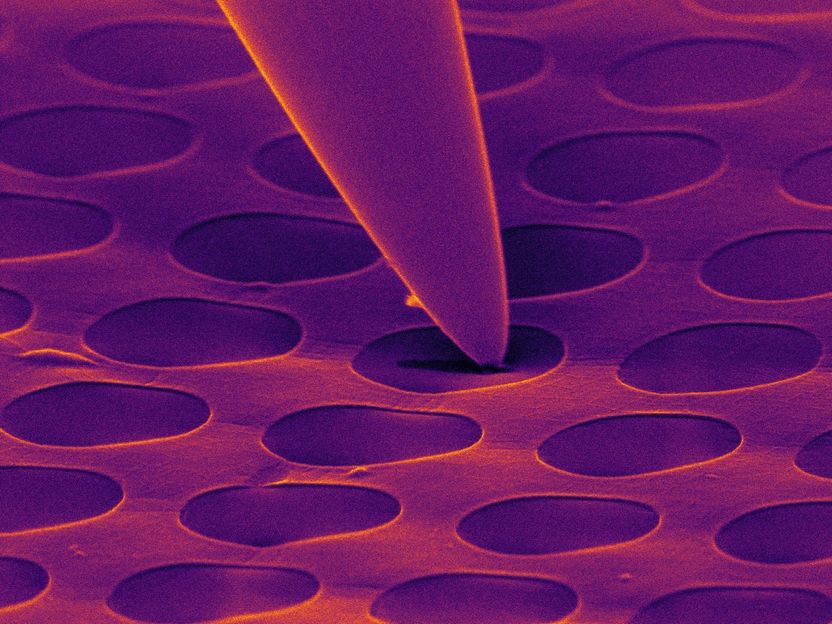House cleaning on the nanoscale
World’s smallest broom
Advertisement
A team of scientists at Friedrich-Alexander Universität Erlangen-Nürnberg (FAU) has developed a novel mechanical cleaning method for surfaces on the nanoscale. The technique successfully removes even the tiniest contaminants down to the atomic scale, achieving an unprecedented level of cleanliness. The results of this study led by Prof. Dr. Erdmann Spiecker from the Department of Materials Science at FAU have now been published in the prestigious journal Nature Communications.

Small metal tip used for cleaning of surfaces on the nanoscale.
CENEM, FAU Erlangen-Nürnberg
World’s smallest broom
Inspiration for the technique was drawn from everyday life as cleaning with a broom works in a similar way. Of course, on the nanoscale instead of using an entire broom, only a single bristle in the form of a very small metal tip is used. This ‘bristle’ is pressed onto a surface and moved back and forth in a sweeping motion. ‘It really is surprisingly similar to a regular broom,’ says Prof. Spiecker, Chair of Micro- and Nanostructure Research. ‘A broom removes loose particles such as dust or breadcrumbs, and it is no different on the nanoscale.’ However, on small scales, the broom is not controlled by hand, but instead by joystick that controls a small piezo motor. Moreover, powerful electron microscopes are used to monitor and control the cleaning process in real time.
Cleaning the world’s thinnest window
By cleaning graphene, the team managed to apply their technique to the thinnest material in existence, as graphene is made of a single atomic layer of carbon. ‘A major challenge was to clean the graphene from both sides, similar to cleaning a window pane,’ says Peter Schweizer, a research associate at the Chair of Micro- and Nanostructure Research, who performed the delicate experiments with his colleague Christian Dolle. ‘With our electron microscopes, we always have to look through the material. Otherwise, it’s impossible to reveal the atomic structure.’ Graphene is known for its mechanical strength. Nevertheless, it is highly surprising that a monoatomic layer can survive the high mechanical forces of a cleaning procedure without being damaged. ‘When we first told our colleagues about it, they didn’t believe us,’ adds Prof. Spiecker.
Nano-dust: Nothing stays clean for ever
Having atomically-clean surfaces enabled the authors of this study to also explore the origins and mechanisms of recontamination at the nanoscale. Leaving a cleaned sample out in air leads to the rapid accumulation of dust on its surface. ‘This is really not surprising as we are all too familiar with dust settling in our homes. There is no reason why this should be different on the nanoscale,’ says Prof. Spiecker. Besides airborne contamination, the team also found a prevalence of surface diffusion when a cleaned specimen is put into a vacuum environment, a phenomenon often encountered in scientific experiments.
Molecular assembly
Finally, the research team used the atomically clean surfaces as a basis for the targeted assembly of an atomically thin layer from molecular building blocks. Porphyrin molecules synthesized in the Department of Chemistry were applied to the cleaned surfaces and welded in place by a high-powered electron beam. The result was a graphene-like monolayer with nanocrystalline structure.
































































